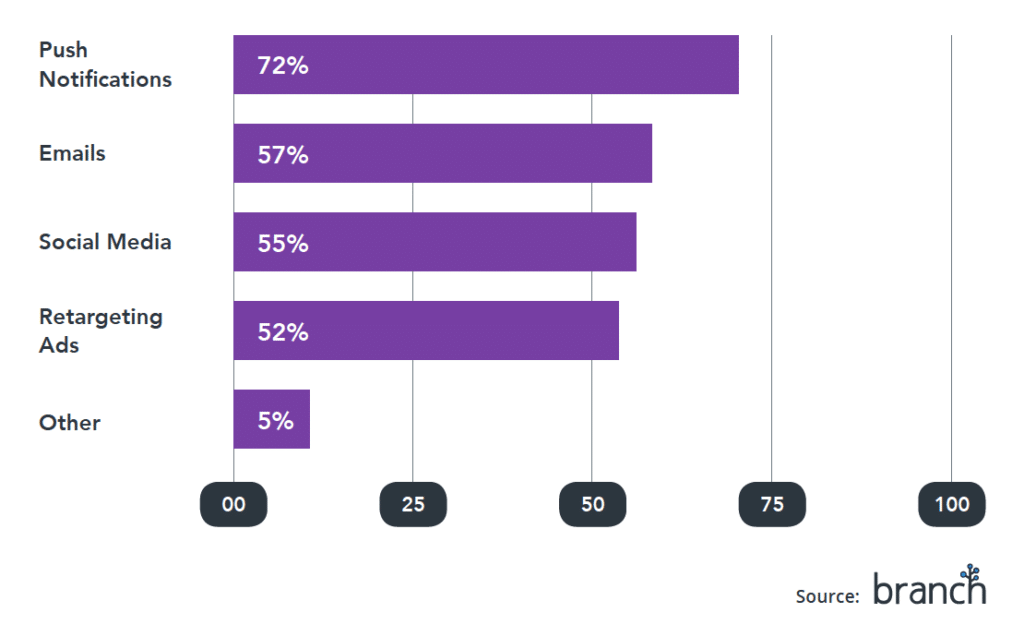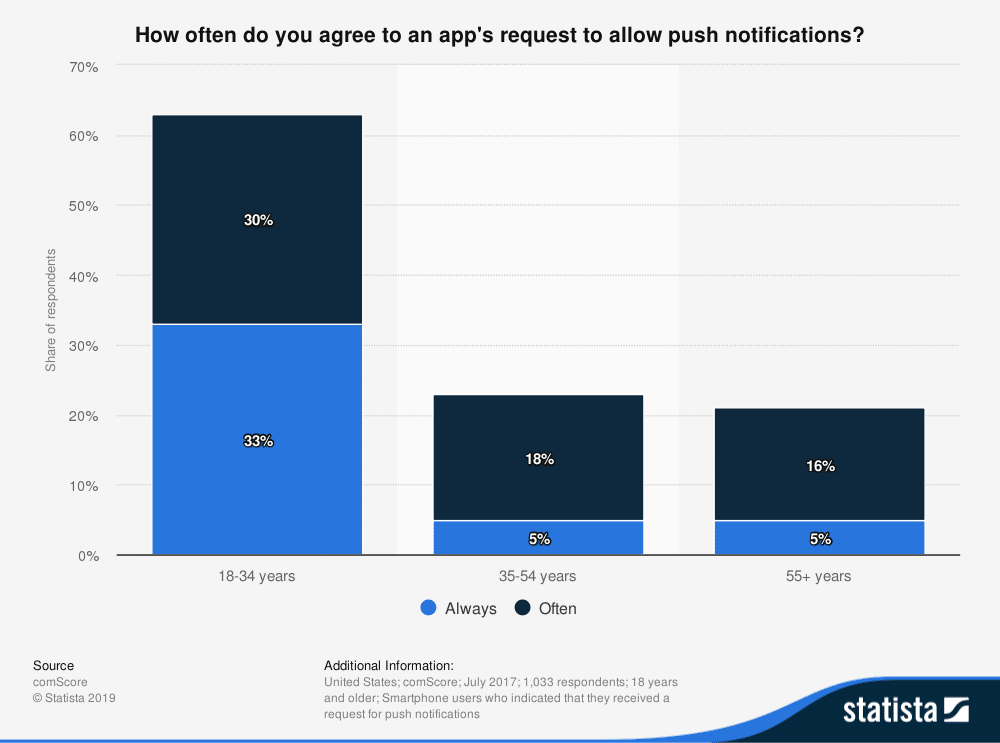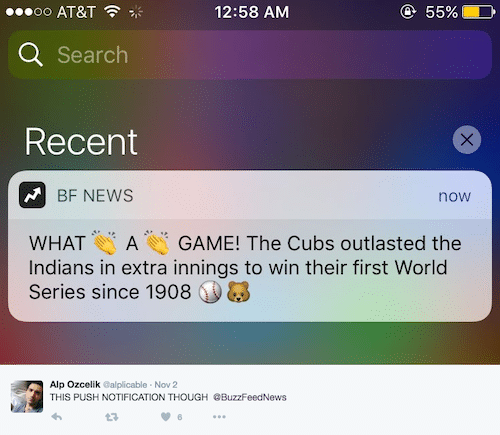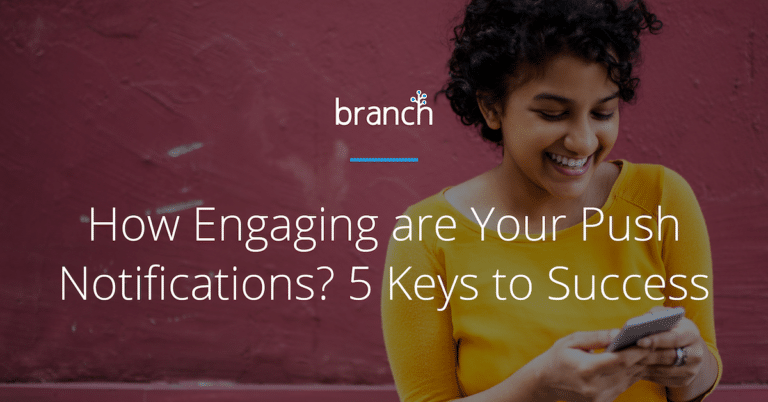In this year’s Mobile Growth Survey, 72% of respondents said they largely rely on push notifications to motivate mobile users to re-engage with the app.

Mobile marketers clearly know push notifications are important. But there are two catches:
- Only 43% of respondents said that they always or often allow an app’s request for push notifications.
- 71% of mobile users aged 18 to 34 said that they get annoyed when they get too many app notifications.
Bottom line: Without properly asking users to opt into your push notifications — and without a solid push notification strategy, you could risk losing those app users entirely.
Push Notifications: What Could Go Wrong?
There are a few challenges to keep in mind as you build your push notification strategy:
1. Generic messages don’t convert
According to Leanplum, personalized push notifications containing content such as user names, favorite categories, or recently viewed items see 4x the open rate of generic messages.
2. Getting users to opt in
A third of users in the prime target demographic of 18 to 34 years old said they always opt in to receive push notifications and 30% said they do often — which means we can assume 37% of users aged 18 to 34 never or rarely opt in. This presents a considerable challenge for mobile marketers.

3. Crowded notification centers
As mentioned, users get annoyed when they get too many notifications. According to research conducted by Business of Apps, the average US smartphone user receives 46 app push notifications per day.
Just like your app needs to stand out in the crowd amongst the millions of apps in the app stores, your push notifications need to stand out in your users’ crowded notification centers.
So how can you overcome these challenges to get your push notification strategy right?
5 Tips for Getting Push Notifications Right
Getting push notifications right is crucial. And it requires personalization, timing, optimization, and a few emojis.
1. Personalize that push!
One more time for the cheap seats in the back: Generic messages don’t convert.
Push notifications that respond to users’ actions or attributes increase user engagement significantly. According to Localytics, users are almost 3x more likely to open the app if the push notification they receive is both dynamic (tailored to user profile/behavior) and segmented (targeted via things like location) — compared to broadcast campaigns in which the same message is sent to all app users.

Avoid sending broadcast push notifications. Instead, spend the time building personalized push campaigns that take into account where your users are, what they’re interested in, and what content will be most effective in driving a conversion.
2. It’s all about timing
Accengage reported that the highest push notification reaction rates globally occur on Tuesday, at 8.4%, followed by Sunday at 8.1%. But this number varies by industry with travel, finance, and ecommerce leading the way — though entertainment edges ecommerce for Android users.

Plan your push notification schedule carefully — the timing of a notification has as much of an effect on Tap Through Rate as the content.
3. If you don’t deep link, don’t do it.
Let’s say you’ve crafted the perfect, personalized push notification that immediately draws a user back into your app. But when they open the app from that notification, it drops them onto the welcome screen rather than the specific in-app content referenced in the notification banner. Some users may take the time to track down the content or product they were interested in, but many will just close out of the app.
Leverage Branch’s deep linking capabilities to link push notifications to specific in-app content like product pages, promotion landing pages, abandoned carts, and more. Doing so will not only create a better user experience, but it will also drive more ROI from your push notifications.
4. Always be optimizing
CleverTap found that Android users are more likely to click through, with a CTR of 4.06%, compared to 1.7% on iOS. Monitor your campaigns closely to ensure you’re optimizing performance and also minimizing the opt-out rate as much as possible. Ineffective copy or ill-timed notifications could lead to users turning off notifications for your app, which in many cases is a one-way ticket to churn town.
5. Keep it creative: Use emojis
Users respond positively to fun, playful push notifications — so don’t be afraid to get creative. Including emojis in your push notifications can increase reaction rates by 20%. As a bonus, delighted users might even share their experience on social networks.
Here’s an example from our friends at Leanplum, which was shared to Twitter by the mobile user who received the push notification from Buzzfeed News:

While Branch doesn’t send push notifications, using Branch’s deep linking capabilities can drive more ROI from your push notifications — and a better user experience.
Ready to drive app user engagement with personalized, deep linked push notifications?
Download the 2019 Mobile Growth Handbook to learn more, and unlock 150+ tips, stats, growth stories, and best practices to drive cross-platform mobile growth.






















